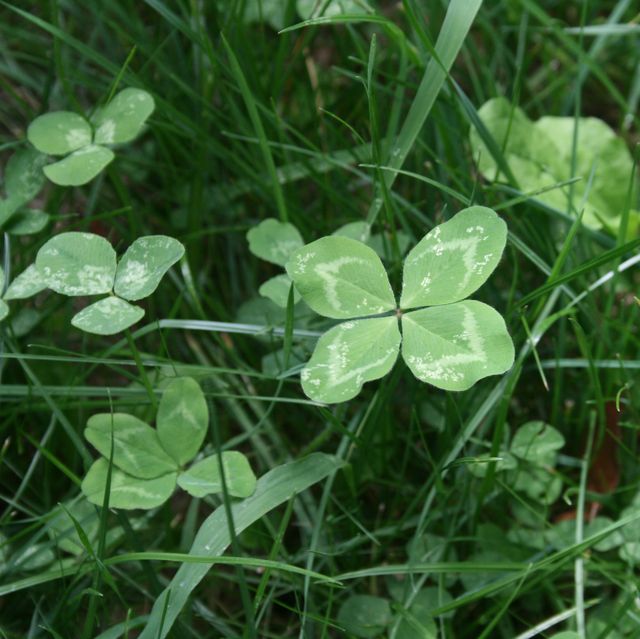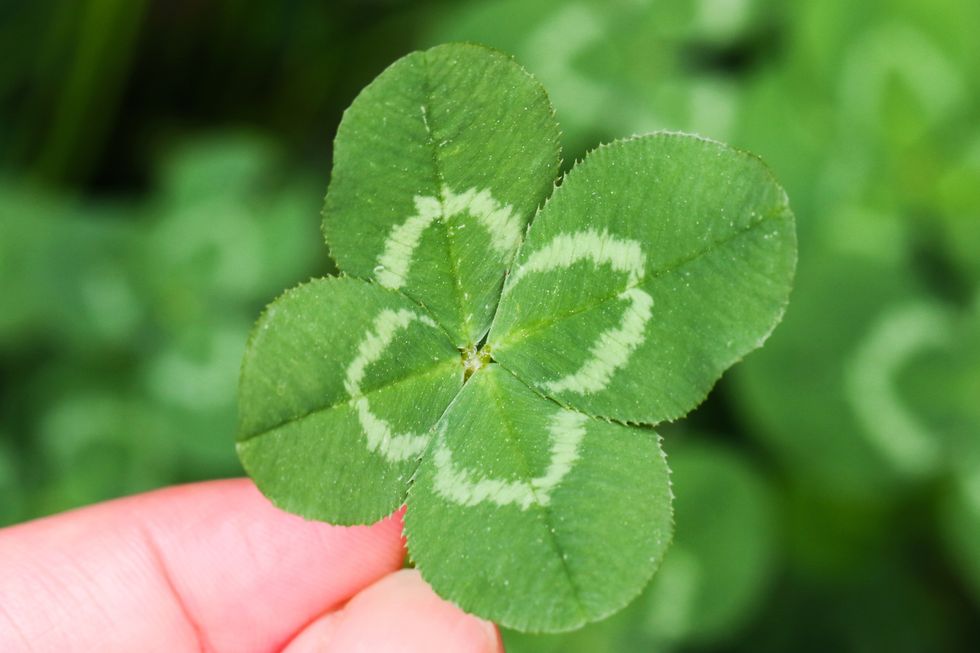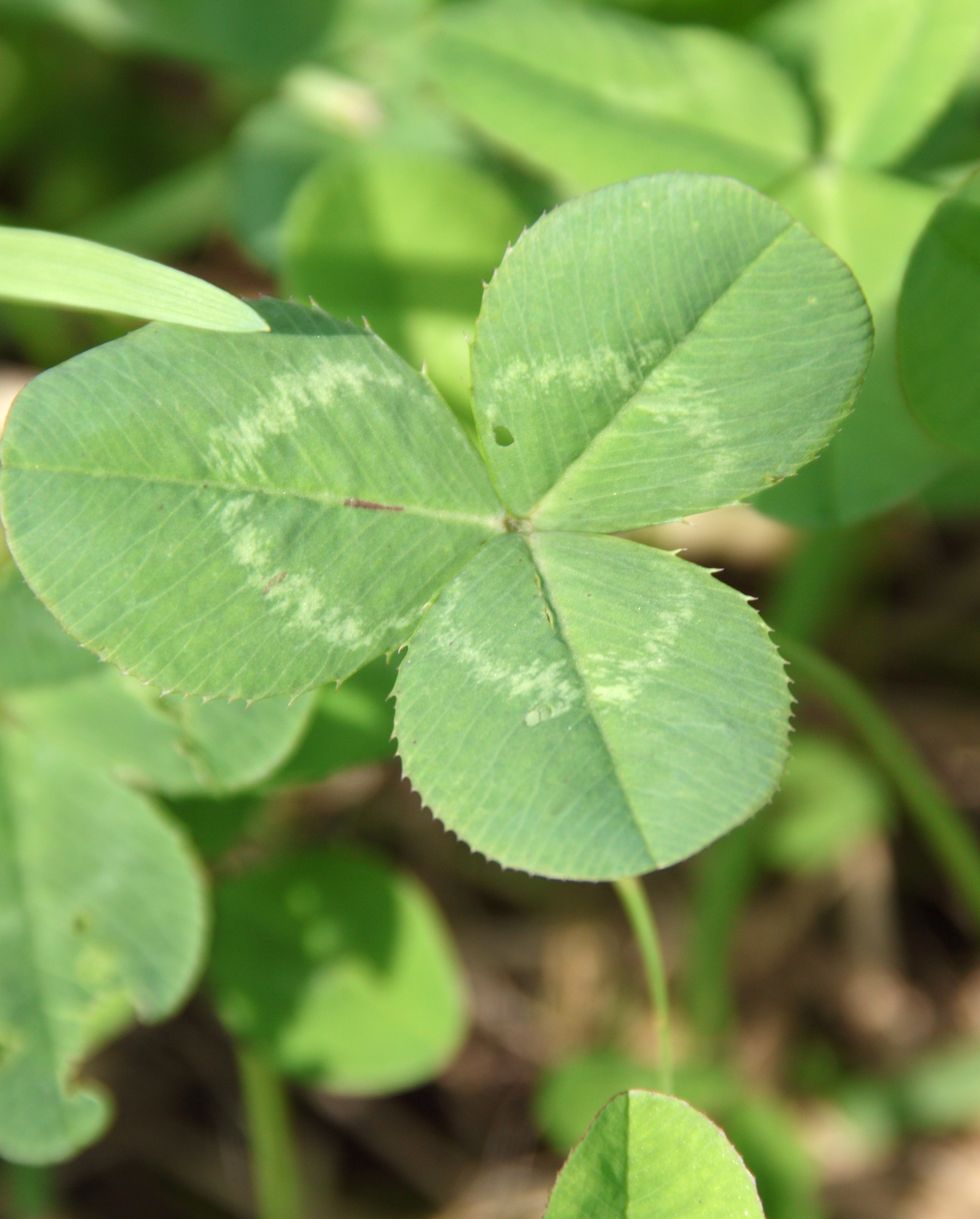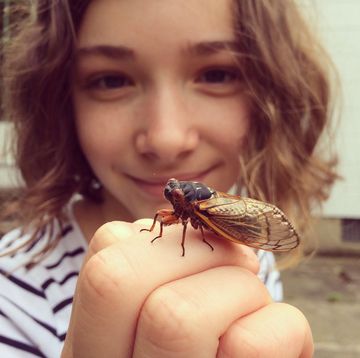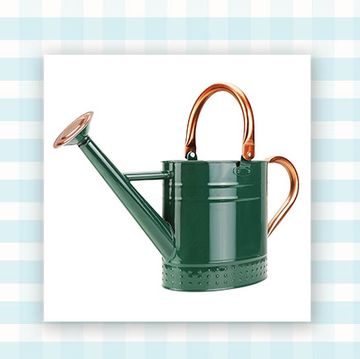Everyone knows that finding four-leaf clover brings good fortune. But why is that, exactly?
Though there are a lot of guesses on the internet, investigating the history behind this particular lucky token is about as easy as finding the pot of gold at the end of a rainbow. So we tracked down a couple scholars to help us sort out the fact from the fancy.
It turns out that the belief is full of both fact and fancy, being rooted in a mixture of history, folklore and guesswork. Throw in the connection between clovers and shamrocks and Ireland and St. Patrick, and the four-leaf clover’s history becomes even more intriguing and complicated. (If you're curious, here's what we know about the real history of St. Patrick's Day!)
Why are clovers a symbol of Ireland?
It's not certain why clovers or shamrocks became associated with Ireland, though it’s possibly somehow related to some 16th century politics.
Dr. Jennifer Paxton, a professor of history of the Medieval British Isles and Ireland at The Catholic University of America, and a lecturer of the Great Courses series was willing to break it down for us.
“During the expansion of English rule into Ireland, [in the 1500s] some English writers described the Irish culture as being primitive,” says Dr. Paxton. “Some of the writings from this period, for instance, said that the Irish ate grass, or clover.”
While clover isn't edible, the plant, notes Dr. Paxton, “actually does resemble another plant, called wood sorrel, which is edible.”
Fast forward to the late 17th and early 18th century, and you start to see the shamrock used as symbol by Ireland. “It’s probably related to the period when Scotland became part of the United Kingdom in 1707, and each country became associated with a badge of national identity,” says Dr. Paxton. Scotland became associated with the thistle, England with the rose, and Ireland with the clover. And thus the shamrock continues to be an emblem of Ireland even today.
Why are four-leaf clovers considered lucky?
Though there aren't any exact answers, one theory that circulates widely is that the Celts, who lived across Europe and the British Isles in ancient times, used clovers as charms against evil spirits.
Dr. Paxton isn't convinced. “A lot of beliefs are said to come from the Celts because they’re mysterious and shrouded in the mists of time,” she says. “But we actually don’t know much about them. There are no ancient sources that say anything about this idea. There’s probably some basis in folklore, but we can’t trace it.”
Another notion is that a four-leaf clover is lucky precisely because of its rarity. Vincent Pennetti, a PhD candidate studying clover and plant breeding genetics at the University of Georgia weighed in on this, for us. “The majority of clover have three leaves, of course” says Pennetti. “So a four-leaf clover is rare. It could be a logical jump between rarity and luckiness.”
Are shamrocks and clovers the same thing?
While the word “shamrock” comes from the Irish word “seamóg,” which means “little clover,” there’s no technical definition of a shamrock, explains Pennetti.
Some people claim a shamrock has to have four leaves, while clover only has three, but there’s no science behind this idea. The most important thing to remember is that both terms refer to clover.
What does the Bible say about four-leaf clovers?
Actually, nothing. And as far as clover’s association with the 5th century religious leader, St. Patrick, that’s also in question. You’ve probably heard that St. Patrick used the three-leafed clover to teach the Irish about the Trinity in the Christian faith. But there’s no evidence that has been found to prove he did any such thing.
For starters, St. Patrick wrote his own biography and mentions no plants, says Paxton. Later biographies in the 7th, 9th, and 12th centuries also don’t discuss clover or shamrocks. The tale does show up in a book about religious symbols, but that’s not until 1919. “The story could have been circulated orally for centuries, but it’s likely not an authentic story about him,” says Paxton.
How rare are four-leaf clovers?
While many people have tried to estimate this, (you see “1 in 10,000” pop up if you do a Google search) the truth is it has not yet been reliably quantified, says Pennetti.
But what UGA clover researchers have learned is that for clovers to produce four leaves, a unique combination of a recessive gene and environmental factors, such as temperature, are at play. For example, in the warmer months of the year, you’re more likely to see four-leaf clovers than at other times, and if you find one, you're likely to find more in the area.
Can you find clovers with more than four leaves?
Believe it or not, different types of clover naturally can have more than three leaves. Pennetti himself has bred clover with 9 leaves, and the world record is 56 leaves!
Interestingly, an even number of leaves is harder to breed reliably, and the four-leafed trait doesn’t always appear, even if the genes are present, says Pennetti.
How do I find a four-leaf clover?
Finding a four-leaf clover isn't as difficult as you might think. Mostly it takes patience and a bit ‘o luck — although Pennetti does have some strategies to help.
You'll have better luck during warmer months, as noted above, and Pennetti suggests that you don't bother with getting down on your hands and knees. Instead, start scanning the ground while standing in a patch of clover, and don’t linger.
“It’s a pattern game,” explains Pennetti. “Look for the break in the pattern. Clovers with three leaves have white V-marks on them, which form a triangle. A four-leaf clover’s marks look like a square or diamond pattern.” (You can see it in the images in this article.)
For best results, don’t spend more than a few minutes scanning any 10 x 10 foot area. If you spot a diamond, investigate: it will often be just two three-leaf clovers stuck up against each other, but don't get discouraged. If you do get lucky and spot one, as noted above, you’ll probably continue to find them in that location. Good luck!
Want to make your own luck? Try these 33 Easy St. Patrick's Day Crafts!
Arricca Elin SanSone has written about health and lifestyle topics for Prevention, Country Living, Woman's Day, and more. She’s passionate about gardening, baking, reading, and spending time with the people and dogs she loves.
